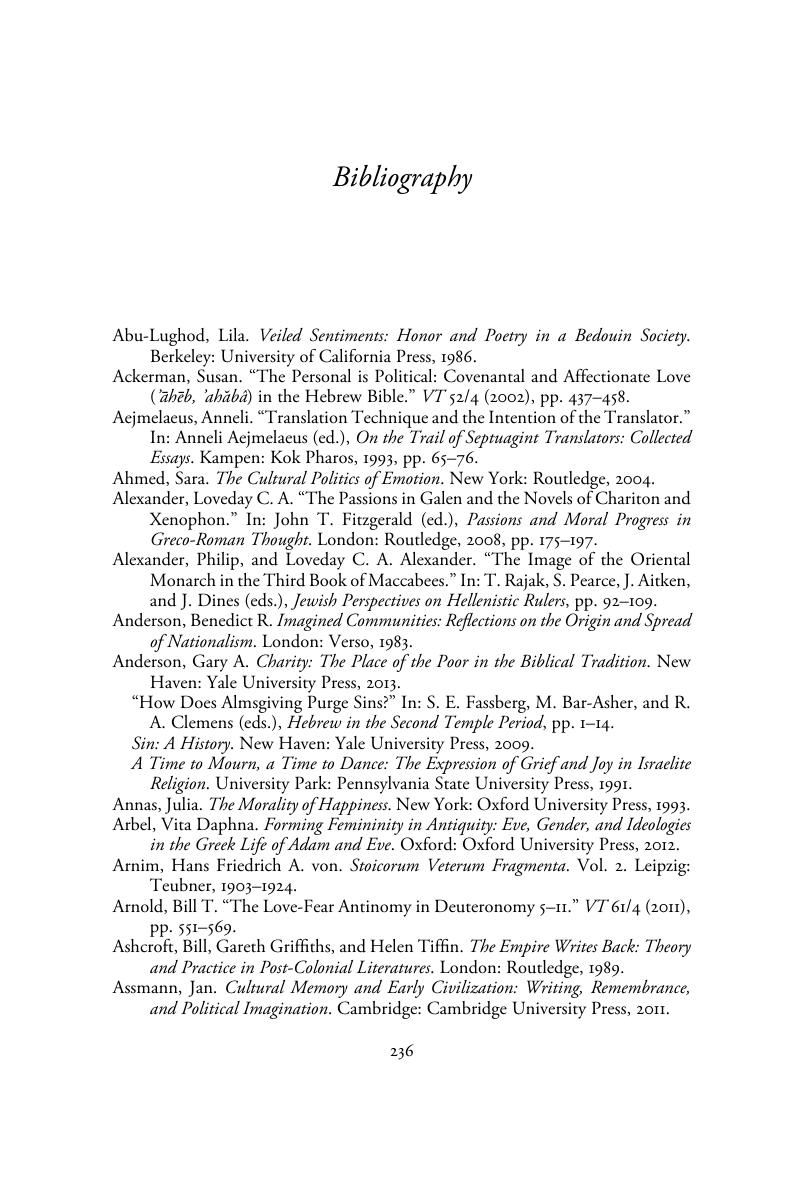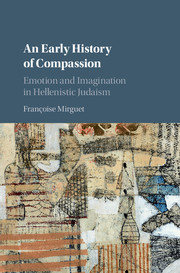Book contents
- An Early History of Compassion
- An Early History of Compassion
- Copyright page
- Contents
- Acknowledgments
- Introduction
- Chapter 1 Between Power and Vulnerability
- Chapter 2 Found in Translation
- Chapter 3 Within the Fabric of Society
- Chapter 4 Bonds in Flux
- Chapter 5 In Dialogue with the Empire
- Conclusion A Discourse of the Other
- Bibliography
- Greek and Roman Sources
- Jewish and Christian Sources
- Subject Index
- References
Bibliography
Published online by Cambridge University Press: 21 September 2017
- An Early History of Compassion
- An Early History of Compassion
- Copyright page
- Contents
- Acknowledgments
- Introduction
- Chapter 1 Between Power and Vulnerability
- Chapter 2 Found in Translation
- Chapter 3 Within the Fabric of Society
- Chapter 4 Bonds in Flux
- Chapter 5 In Dialogue with the Empire
- Conclusion A Discourse of the Other
- Bibliography
- Greek and Roman Sources
- Jewish and Christian Sources
- Subject Index
- References
Summary

- Type
- Chapter
- Information
- An Early History of CompassionEmotion and Imagination in Hellenistic Judaism, pp. 236 - 264Publisher: Cambridge University PressPrint publication year: 2017



